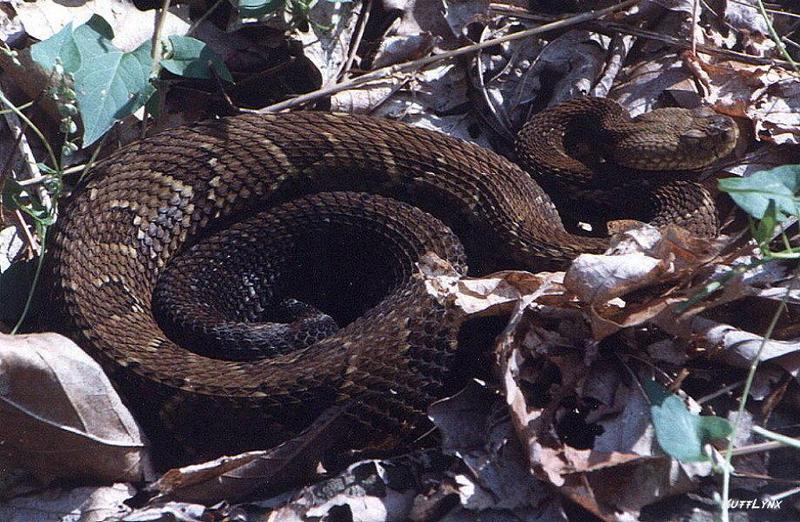|
| Query: Brown snake | Result: 162nd of 285 | |
Timber Rattlesnake
| Subject: | Timber Rattlesnake
| | Poster: | Dave (d4862@epix.net)
| |

| File size : 152468 bytes
File date : 1999:06:14 09:00:00
Resolution: 920x600
Jpeg process : Baseline
Posted Newsgroups: alt.binaries.pictures.animals
Posted Date: Mon, 14 Jun 1999 02:00:08 GMT |
Picture , care of my Dad ! A real Northern Pa. Timber rattlesnake.
name="rattler2.JPG"
Comments
========
From: John White
Subject: Re: Timber Rattlesnake
Date: Wed, 16 Jun 1999 07:15:46 -0400
Timber Rattlesnakes (Crotalus horridus) come in four different
color variations:
1) Yellow - with black or dark bands - normally found in the
uplands of the Northeast.
2) Western - black or brown crossbands on a background color
of gray, brown, yellow, or tan - normally found west
of the Mississippi.
3) Southern - black crossbands on a pinkish to pale gray
background - found in the lowlands of the South.
4) Black (melanistic) - heavy, black or very dark brown bands
that cover much of the lighter background color.
- found in the uplands of the Northeast.
Both photographs are excellent examples of this beautiful snake!
--
Best Regards,
John White
WhiteSnake Reptiles
Reptiles & Amphibians of Virginia (also Crocodilians)
http://www.erols.com/reptiles/ |
^o^
Animal Pictures Archive for smart phones
^o^
|
|

